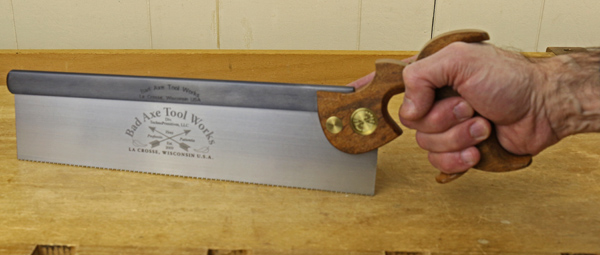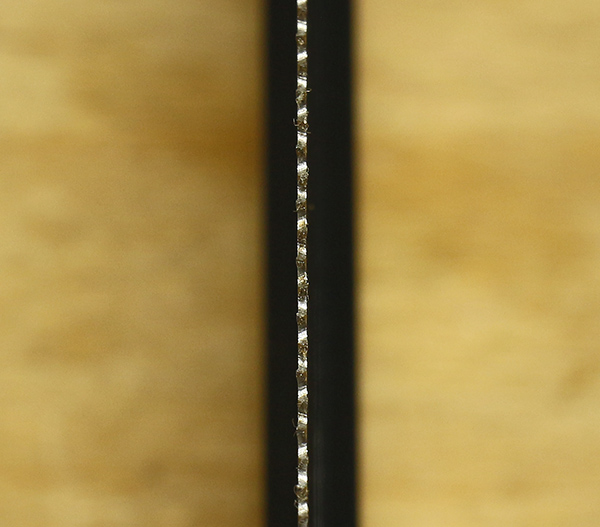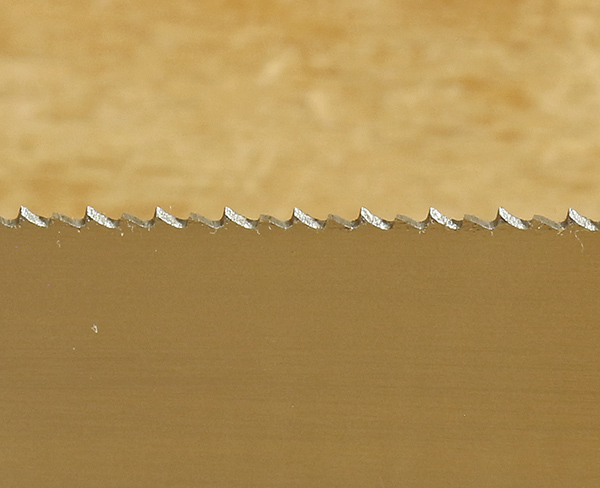Backsaws are a must for cutting joinery and other fine woodworking, but with so many sizes and tooth configurations available, it can be difficult to sort them out and more so to choose one saw that can perform a wide variety of tasks. Yet that is just what this short article will do for you right here.

Meet the family
A backsaw consists of a long rectangular blade (saw plate), a wooden handle, and most important, a thick metal back that is folded over the top of the blade. The back stiffens and straightens the blade so it can cut accurately, and adds weight and balance.
Backsaws come in a range of blade lengths with proportionate blade depths and plate thicknesses. Smallest are dovetail saws with blades 8 – 10″ long. Carcase saws are about 12″ long, sash saws 14″, and tenon saws 14 – 16″. But the best way to understand the family of backsaws is to put the names aside and instead think of function. For this, consider the two broad area of woodworking: case joinery, particularly dovetails, and post and rail joinery, which is mostly mortise and tenon joinery with its many variations.
A full set of saws
Sawing dovetails involves relatively small but very precise rip cuts. For this work, a backsaw about 10″ long with about 15 rip teeth per inch will perform well. A typical plate thickness for such a saw is .018″ with about 2″ of blade depth under the back.
Sawing tenon cheeks requires a much more robust rip cut so a bigger saw is in order: 14″ long (16″ for larger work) with a .025″ saw plate with 11 – 12 rip teeth per inch, and about 3 1/2″ of depth.
In addition to these rips cuts, there are all sorts of crosscutting tasks such as tenon shoulders, miters, dados, and various trimmings. A 12″ long saw, with a .020″ plate filed with about 14 crosscut teeth per inch will handle this work.

Thus, a set of three or four saws would be considered ideal to manage almost all joinery work. My set of saws, shown in the photo, consists of, from top to bottom, a 16″ rip for large tenons, 14″ rip for most tenons and general joinery rip cuts, a 12″ saw that I’ll discuss more below, and a 10″ rip for dovetailing.
Take a closer look
A slight modification to the teeth of the mid-size 12″ saw can make it much more versatile. The key is in the tooth design.
A detailed discussed of tooth design is beyond the scope of this article but think of rip teeth as basically a row of tiny chisels with their edges at 90° to length of the row. These plow a kerf along the grain of the wood. Crosscut teeth are like tiny V-point knives arranged alternately with the bevels facing the midline of the row. These sever the wood fibers to create a kerf across the grain.
The saw filer creates rip teeth by pushing the file perpendicular to length of the saw. For crosscut teeth the file is oriented about 25° away from this to create bevels on the inside faces of the teeth.
But how about somewhere in between, where the file is angled say 15° or so? Well then we create a tooth line that is capable of good ripping and good crosscutting. In fact, my 12″ saw has such “hybrid” teeth, as described and made by master saw wright, Mark Harrell of Bad Axe Tool Works, and I work just fine without a dedicated crosscut saw, even for fine work. The close up photos below show front and side views of the tooth line.


Conclusion
That 12″ saw is a great choice for your first backsaw and will even perform quite well as your only backsaw. Sharpened with “hybrid” teeth, as described above, it will rip surprisingly well for dovetailing, crosscut remarkably cleanly, and has enough plate depth at 2 3/8″ for sawing small to medium tenon cheeks.

Later, you probably will want to acquire dedicated backsaws for a full set. However, even with a set of three or four saws, your mid-size first saw will not be obsolete or underutilized at all. It will be your go-to saw for joinery crosscuts and will probably see more use for general bench work than any of the other saws. If, for some reason, you prefer a dedicated crosscut-tooth saw, it can always be re-filed as such.
In summary, my advice is to start with a mid-size backsaw filed with hybrid teeth — and get to work making things!

Share tips, start a discussion or ask one of our experts or other students a question.
No Responses to “Tools to Get Started in Woodworking: Backsaws”